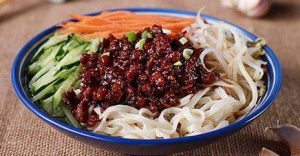Japanese ramen (Fig.1), a chewy type of wheat noodles served in thick pork or fish-based broth, has become a popular dish throughout the globe. Despite the complicated and time-consuming process for preparing the ramen broth and its meat toppings, Japanese ramen could be both affordable and casual; served in street stalls of Tokyo for about 5 dollars. However, at the same time its humble background doesn’t impede it from being present in the menus of the most luxurious Japanese restaurants all over the world. Japanese ramen, named after Chinese pulled-noodles and still called “中華ラーメン”, by the Japanese people have no doubt exceeded its Chinese predecessors in international acceptance. In this essay I would examine both the history and present of Japanese ramen, further locate ramen in Japanese culinary culture and answer the question of why this food became immensely popular.
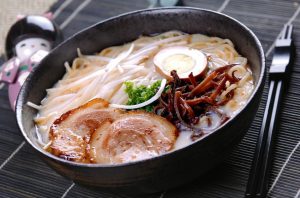
Fig.1: Japanese ramen in tonkatsu broth, with scallion, agaric and roast pork as toppings.
Part 1: Introduction and History
“Although there are as many types of ramen as there are ramen chefs, the most basic components of a bowl are the noodles, the stock, and the flavoring sauce.” (Solt, 3) Authentic ramen noodles present a yellowish color from the infused water (kansui) added in the dough, other ubiquitous components include wheat flour, salt, water and baking soda. Different regions in Japan have their own customs for making ramen broth, a combination of meat, seafood, and vegetables boiled for up to a whole day renders the broth a thick taste. Lastly, the concentrated seasoning sauce (tare), is usually available in three flavors – salt (shio), fermented soybean paste (miso), or soy sauce (shoyu).
“Ramen began life in Japan as a cheap, scrumptious and filling food from China.” (Solt, 5) Introduced by Chinese migrants from Guangdong in 1880s and referencing elements from Chinese pulled-noodles, Japanese ramen started as a street food for workers. Due to its industrialization, Meiji Japan fed more and more wage laborers, and therefore created a heightened demand for outdoor dining establishments. With its unexpected popularity, ramen was welcomed into restaurants and modified with toppings such as bamboo shoots and Chaashyu (roasted pork) that catered to the Japanese taste. To many Japanese people, Ramen also embodies the culmination of their country’s postwar history. After WWII, the filling nature of ramen made it a main dish to alleviate hunger and generate the labor power that stimulated the industrial recovery of Japan’s urban areas. Made with American wheat the noodle was “frequently alluded to in popular cultural productions… Artists and directors used the dish to represent various aspects of everyday life in early postwar Japan.” (Solt, 68) Artistic presentations of Ramen insinuated the desperate food situation, and the gap in dietary habits between people of varied ages and social status. In 1949, a poem was written in graffiti on the streets of Toyko, focusing on food scarcity among young couples:
Eating nothing but ramen on a date.
With an empty wallet, yesterday and today.
The tryst was most disappointing. (Ivy, 10)
For postwar Japan, although ramen was the affordable commodity that kept the country working, people labeled the low-cost food along with the hardship the working class faced during their country’s recovery period. The thought of considering ramen as the monotonous choice of diet altered accompanying the country’s rapid economic developments. In a 1985 Japanese film Tampopo, failing several times before making a satisfying bowl of ramen, the protagonist of the film reaches a “Ramen Enlightenment” and claims that: Good ramen represents all that is good in life. (Kushner, 7) Throughout the postwar decades, ramen chefs continuously introduced modifications to the original recipe, therefore the intricate process of creating a perfect bowl of ramen had conveyed the Japanese spirit of craftsmanship, the spirit to pursue excellency in one’s field of profession. Nowadays, ramen has become an inseparable part of Japanese pop culture, in the renown manga Naruto, the young ninja Naruto favorites the ramen (Fig.2) from the restaurant Rāmen Ichiraku (ラーメン一楽 ), he claims that the food fills him with strength. In modern Japan, ramen stalls are present in every corner of the streets, serving this comforting noodle dish to people after a day of hard work.
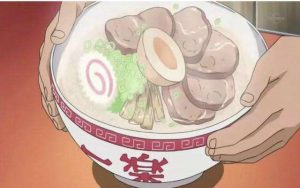
Fig.2: The ramen served in Rāmen Ichiraku from the anime Naruto
There are copious varieties of ramen in different regions of Japanese, recipe for both the noodle itself and the ramen broth could differ in different Japanese regions. The percentage of kansui affects the texture of the staple food (the higher the percentage the harder the noodle), noodles with high percentage of kansui tend to be served most frequently in the north and east of Japan. Hakata-style ramen and Okinawa soba contain noodles using no kansui, whereas Tokyo- and Sapporo- style ramen use noodles with a significant amount of kansui. On the other hand, the ingredients added to produce the broth significantly affects the taste of the ramen, while Tokyo ramen shops use only chicken and no pork in making the broth, Kyushu ramen are known for their heavy use of pork and pork bones (tonkatsu). Although the standard vegetables used in the broth are onions, scallions, ginger, and garlic, more recent shops start using kabocha squash, potatoes, and even apples in vegetable potage ramen. (Solt, 30) Japanese local customs for serving and consuming the product. In addition to the Japanese dining formality of notifying their companions when they start and finish eating by saying “いただきます” (I’m starting my meal) and “ごちそうさまでした” (I’ve finished eating, thankyou), Japanese people are accustomed to deliberately making loud noise when consuming ramen; a gesture that implies the tasteful flavor of the noodle, and gratitude to the chef who made it. (Rath & Assmann, 265)
Part2: Comparisons among ramen restaurants around the world
During the early 20th century, Ramen enjoyed increasing popularity in cities of the West such as Paris, New York and Honolulu, it became the first modern international food produced in the East. (Solt, 132) Today, Japanese or Asian fusion restaurants all over the world offer ramen to their customers. Ichiran-Ramen (一蘭ラーメン) is arguably the most popular ramen restaurant in Japan, founded in 1960 in the city Fukouka, the restaurant now has branch stores in Osaka, Tokyo, and other major Japanese cities, the restaurant is famous for its Hakata-style ramen (Fig.3) and insists in only selling such ramen. Ichiran started as a membership restaurant, since the founder was only content to offer his service to frequent customers who had shown their appreciation towards its ramen by returning to the restaurant time after time. Later, the competition in the foodservice grew more and more rapid, forcing Ichiran to open its doors to regular diners. Today, Ichiran-Ramen restaurants all over Japan have become crowded tourist attractions for those on a quest for authentic Japanese ramen. The restaurant grew into a merchandise that tenaciously abides by the ramen recipe handed down from its founder, focusing on the conformance in flavor standards among its branches.
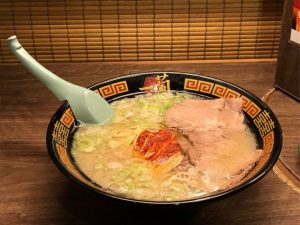
Fig.3: Ichiran-ramen’s Hatakat-style ramen, characterized by the creamy tonkatsu broth, chili oil and light flavored chaashyu.
While the recipe of “authentic” ramen has always been debatable and may remain a mystery to the world, popular ramen restaurants from Japan have open chain stores globally. Mutekiya (無敵家) a ramen stall that started in Toyko, now owns multiple stores in Beijing, Shanghai and Seoul. Mutekiya advertises on the effort they pay in making the ramen broth, the restaurant claims to spend a whole day boiling the tonkatsu and chicken before selling it to their patrons, therefore making their soup extra thick and creamy. In addition to the traditional shio, miso or shoyu ramen, they’ve improvised their menu to play up to the preference of foreign customers. In 2015, when the restaurant opened in Shanghai, it came up with a creative ramen dish “Mabo-Mazesoba” (Fig.4, ramen in pungent and spicy broth with Mapo-tofu)
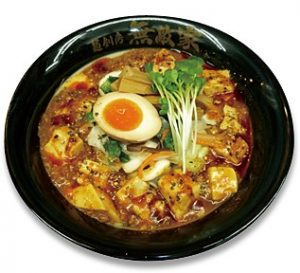
Fig.4: Mabo-Mazesoba, ramen with spicy tofu and stir-fried vegetables
Adding in Sichuan culinary elements, such recipe was nothing orthodox compared with typical Tokyo ramen in lofty chicken broth, however, it was surprising successful among consumers who prefer a more pungent taste and vegetarians who chose bean curd as their protein source.
Ramen restaurants are not rarely seen even across oceans in the United States, the Hajime Ramen Bar located at 2345 Cheshire bridge rd NE is a rallying point for Asian students in Atlanta. The restaurant offers a great many choice of noodles in their innovation menu, including honey miso, wasabi shoyu and ultra-spicy ramen (Fig.5), these ramens comprehend complexed flavors in their broth. Differing from their peer restaurants in Asia that only provides a handful of toppings limited to Chaashyu, bamboo shoots, scallions and Onsen Tamago (half boiled egg), Hajime offers a lot more, including but not limited to seaweed, spinach, corn, mushroom and even fried chicken nuggets, ingeniously combining western and eastern culinary through their ramen.
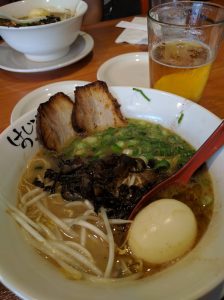
Fig.5: Tonkatsu ramen served in Hajime.
Part 3: Economical value of the ramen industry
Ramen, along with Sushi has been a national cuisine of Japan, the food stands for Japan’s national identity and cultural homogeneity. According to a survey, “Ramen accounts for twenty-six percent of all meals eaten outside the home.” (Kushner, 3) There are around 80,000 ramen stalls in Japan, the accumulated income for these ramen stalls could go up to 0.8-1 trillion yen per year, with an average price of 700 yen per bowl, the Japanese people could consume 12-14 hundred million bowls of ramen per year. In Tokyo, the average cost of a bowl of ramen in “new-wave shops” is over 800 yen ($8.70). More traditional or family-businesses offer bowls from 550 yen ($6.00) and up, and some franchised shops offer 290-yen ($3.10) bowls for students and youth who just started their career. (Fig.6, Rath & Assmann, 262) Anyhow, the price of a ramen meal is well below the average cost of meal in Tokyo, which is 800 yen, throughout its 150 years of history, ramen has persistently played the role of filling the stomach of the commoners. Due to ramen’s ever evolving nature, keeping up with the newest ramenology could well be a full-time job. Guide books that meticulously comment on ramen from different restaurants are sold to ramen fanatics to guide them to satisfaction. Ramen museums are also founded in many Japanese cities, as they educate people on the characters of ramen in different regions.
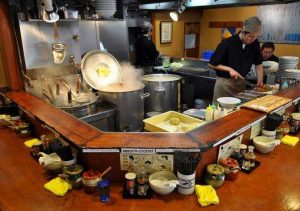
Fig.6: A ramen stall in Tokyo, this stall could serve up to 200 customers each day.
Cup ramen emerged in 1960s, as the Japanese businessman Ando traveled to the US to promote instant ramen as a new food to Americans looking for an exotic “oriental” taste. (Kushner, 221) Nowadays in Tokyo, of the average man or woman questioned for the survey, about 50% admitted eating cup ramen about one-to-three times a month. In the rapid paced modern metropolitan, instant ramen has become the most popular convenience food. The largest instant noodle corporation Nissin (founded by Ando) design a variety of products that imitate the taste of Japanese ramen, the company claims that they are now competing with regular ramen on quality. Last year, the company came up with a series named “The King of Noodles” (Fig.7), providing their consumers with numerous of choices in flavor, although each bowl of “The King of Noodles” is sold at 400 yen, it is said to have perfectly replicated the broth of traditional Toyko ramen.
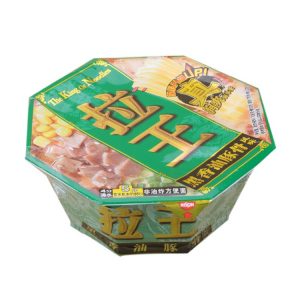
Fig.7: “The King of Noodles” soybean source flavor, cup noodle in Chinese version.
Ramen, a Japanese noodle that started as a necessity for the working class due to its filling and cheap nature, records the social development and improvement of life quality in the nation, and is now received global acceptance as Japan’s national food. Served in a variety of forms, ramen had no doubt spawned a fever for noodles internationally. Although the original recipe by the Chinese migrant who decided to sell noodles from his homeland for a living, had been modified for countless times throughout a century, the slipping texture of noodle and the thick broth remains the reason of its popularity; after a long day, a bowl of ramen offers diners an indulgent moment.
References
Barak Kushner, Slurp! A Social and Culinary History of Ramen- Japan’s Favorite Noodle Soup, Global Oriental Press, 2012.
Eric C. Rath and Stephanie Assmann, Japanese Foodways, Past and Present, Univerity of Illinois Press, 2010.
George Solt, The Untold History of Ramen: How Political Crisis in Japan Spawned a Global Food Craze, University of California Press, 2014.
Marilyn Ivy, Discourses of the Vanishing: Modernity, Phantasm, Japan, Chicago: University of Chicago Press, 1995.
Picture References
http://blog.sina.com.cn/s/blog_71fb898d0101h8w2.html
http://www.sohu.com/a/115455555_482986
http://www.mutekiya.com/world/english.html
https://www.zhihu.com/question/34888278
https://www.yelp.com/biz_photos/hajime-atlanta-3?select=dmLgEj4I89bF1lYNFPBAsg&reviewid=PKb5nJ5oqX4myfK5MJoU4g

